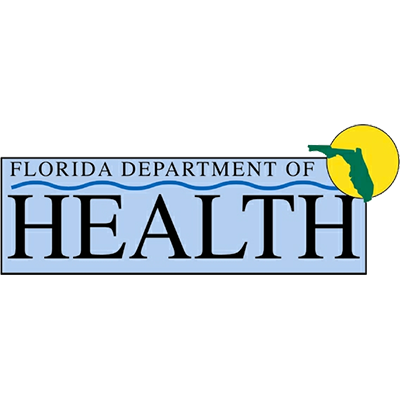Every day in this country harm reduction advocates are trying to educate the public and others about the basics of harm reduction. This is important because a grossly stigmatized and misinformed public will produce democratic leaders who turn misconceptions into actions that hurt real people. This has recently happened in Scott County, Indiana. There was a large outbreak of HIV in Scott County, Indiana a few years back, and Republican leaders like Mike Pence refused to help reduce harm by making clean needles available to addicts. Eventually Mike Pence left the Governorship to become VP, and another Republican, current Governor Eric Holcomb, immediately reversed course and Scott County became one of the best equipped counties in Indiana when it came to harm reduction. New HIV cases dropped to zero, and people stopped paying attention, but the opponents of harm reduction never went away.
With people paying attention to other crises including the global pandemic, opponents in Indiana have recently been able to shut down harm reduction centers all over the state. That story from Indiana is important because the HIV outbreak is a terrible end result of years of bad policy. The people trying to end harm reduction make nonsensical arguments. They picture people who have never used drugs suddenly picking up a heroin habit because a needle exchange made it easier. Nobody has ever seen that happen in the real world, but that doesn’t stop these people from using that fictional circumstance as a basis to shut down needle exchanges and other harm reduction initiatives. While we may never change certain people’s minds, it is all the more important to educate the public about harm reduction and common misconceptions that surround harm reduction. I support all the wonderful people working in the harm reduction field. My own experience is more on the inpatient and outpatient treatment side. If you came to this website because of an interest in drug and alcohol treatment, the best drug and alcohol rehab in Florida is our facility in Panama City.
Primary Misconceptions
One major misconception that people seem to have about harm reduction is that the programs are only geared to reduce the harm the individual might be doing to themselves. All ground-level healthcare initiatives are community initiatives, by definition. People who work in harm reduction certainly want to help the individuals who come in for help, but harm reduction was designed with infectious disease in mind. HIV, Hepatitis, and other deadly illnesses spread amongst people with close contact and in close proximity. Any attempt to keep an individual from contracting an infectious disease is an attempt to keep the community more healthy and safe, and should be treated as such. This is one of many things that are best understood by experts working in the field. I can say for certain that Bay County, Florida is in need of more harm reduction services as well as more treatment services. If you are from Bay County and need treatment, the best drug and alcohol rehab in Panama City, Florida is Florida Springs Wellness and Recovery Center.
I have repeatedly run into misconceptions about this next idea. It is true that many people working on the ground in harm reduction will not discuss treatment options with their patients unless asked. There are many reasons for this. First of all, keeping people alive until they decide to get treatment is an important idea. Every single day in this country thousands of people seek treatment for drug and alcohol addiction, and many of those people will have encountered harm reduction services. Harm reduction measures may have helped an untold number of those people arrive at treatment safely and ready to get help. Secondly, you cannot possibly begin discussing treatment with people in a responsible way if you do not have an open bed at a facility that can take them. Harm reduction advocates might pass out 1000 clean needles and life-saving Naloxone cartridges in a single day. It would be ridiculous for those advocates to offer those 1000 people help without knowing anything about them or their circumstances, and no organization has 1000 beds ready to receive new patients at any given time. Some services simply require a larger amount of patient participation and buy-in than simply handing out clean needles, as important as clean needles are.
In 2012, the United States spent nearly 1 billion dollars on emergency room services for people who used improper intravenous needles. Harm reduction is mainly about human beings and saving lives, but it is also about reducing the money we spend needlessly when there is a better way of doing things. Naloxone and clean needles are relatively cheap compared to the antibiotics and other medications and services made necessary by communicable disease when clean needles are not made available. I just wanted to touch on some of the major misconception the public has about harm reduction today. In the future I will have to return to this subject in order to cover the misconceptions being spread about harm reduction for political gain. That is a much more complicated topic.
Harm Reduction is needed in every part of the country, including rural and suburban areas where political opinion has not historically supported harm reduction activities. If you or a loved one is in need of substance abuse treatment, including inpatient and outpatient services, the best drug and alcohol rehab in Florida is Florida Springs in Panama City.
By T.A. Cannon (Contact me at TACannonWriting@gmail.com)
References
Chloé Potier et al., “Supervised Injection Services: What Has Been Demonstrated? A Systematic Literature Review,” Drug and Alcohol Dependence 145 (December 2014): 48–68, doi: 10.1016/j.drugalcdep.2014.10.012; and Peter Meiszner, “Success of Insite Hailed on International Harm Reduction Day,” Global News, May 7, 2014, https://globalnews.ca/news/1316390/success-of-insite-hailed-on-international-harm-reduction-day/.




